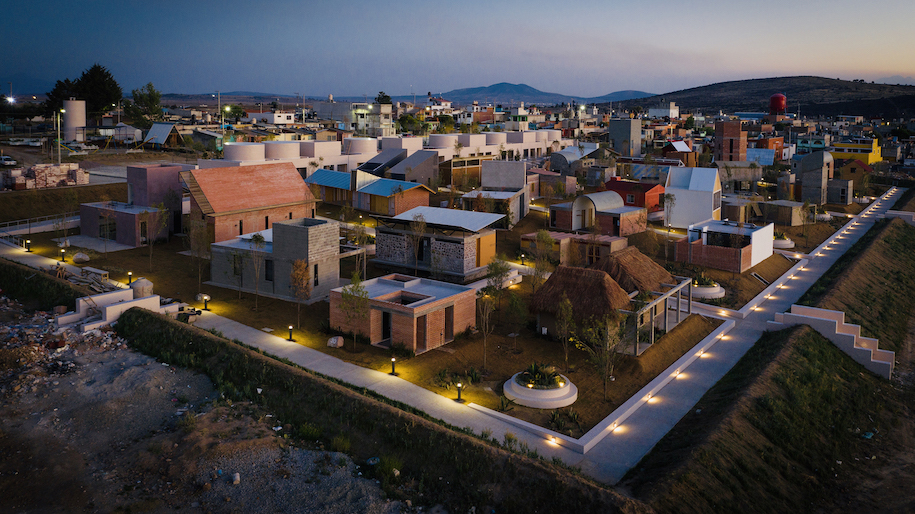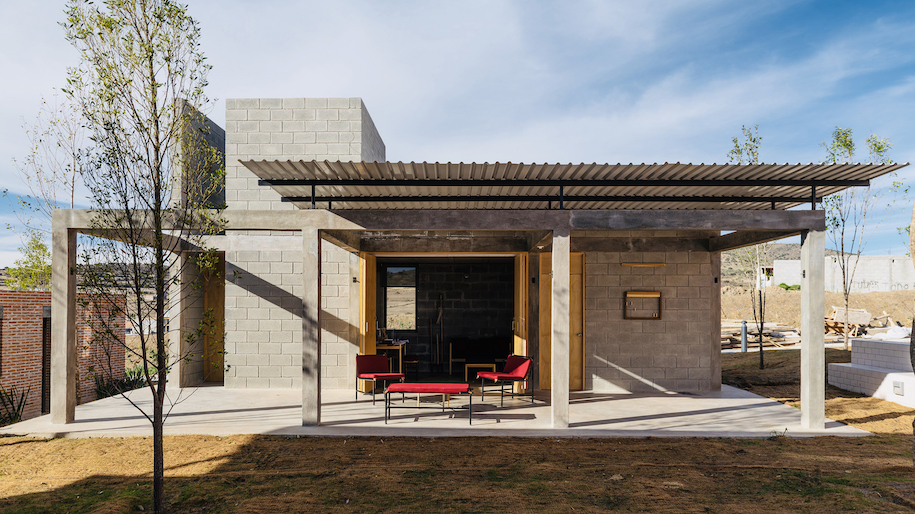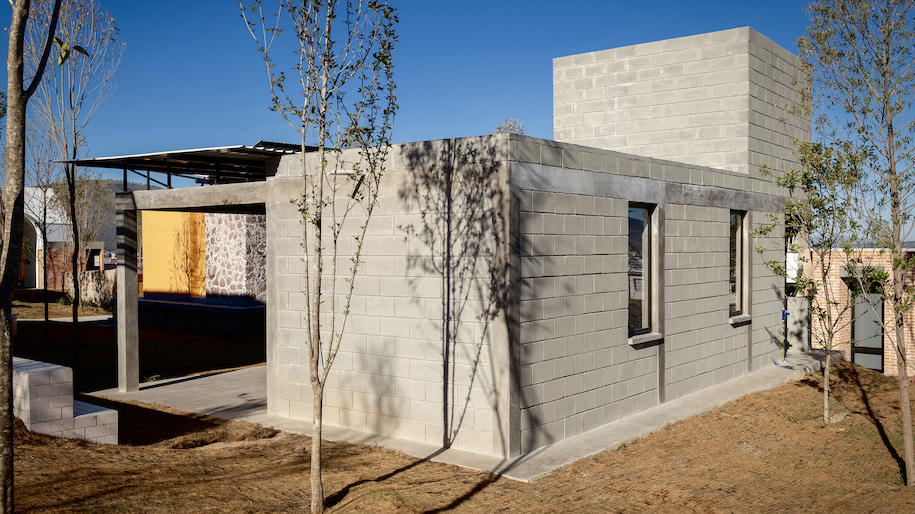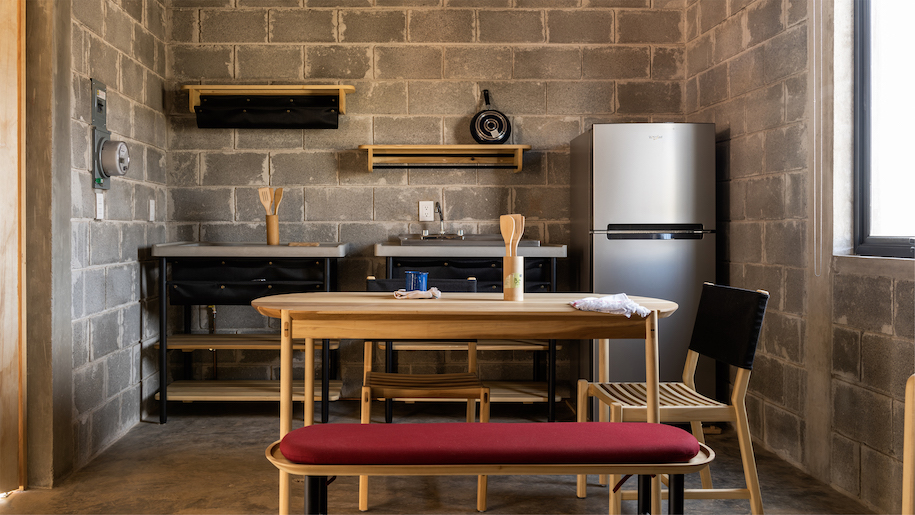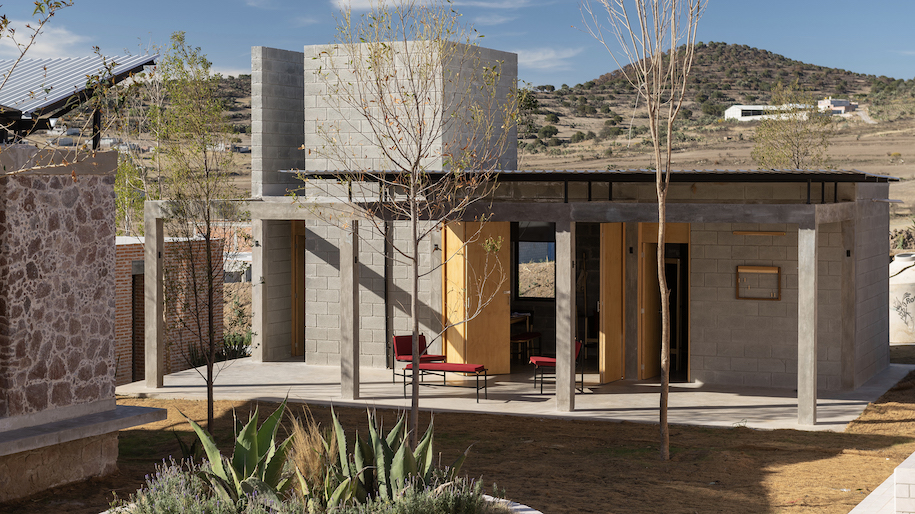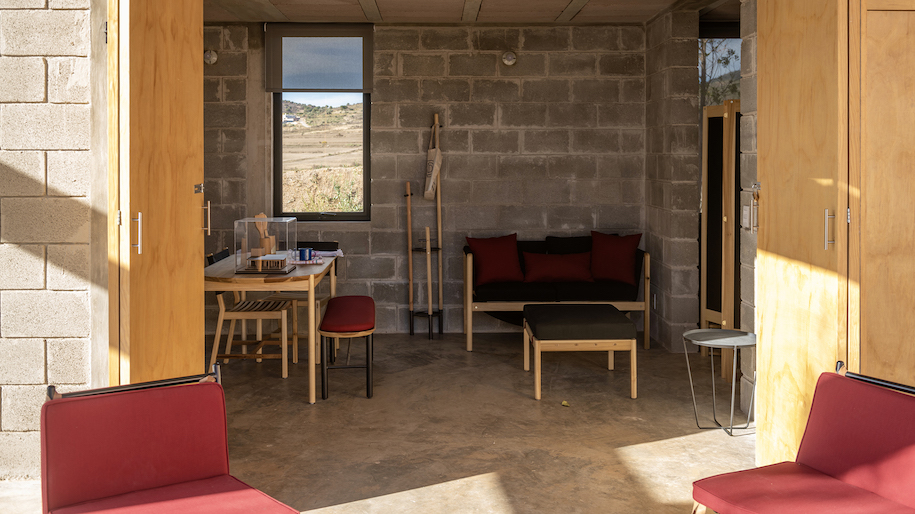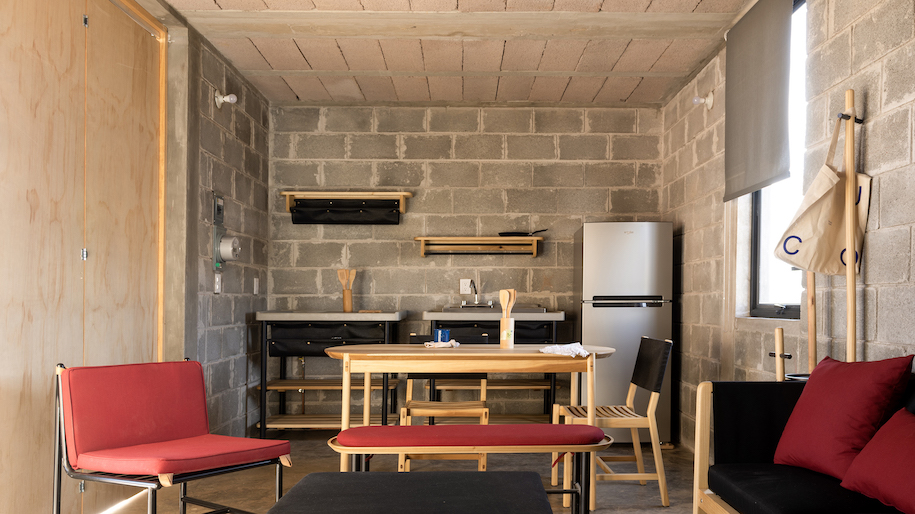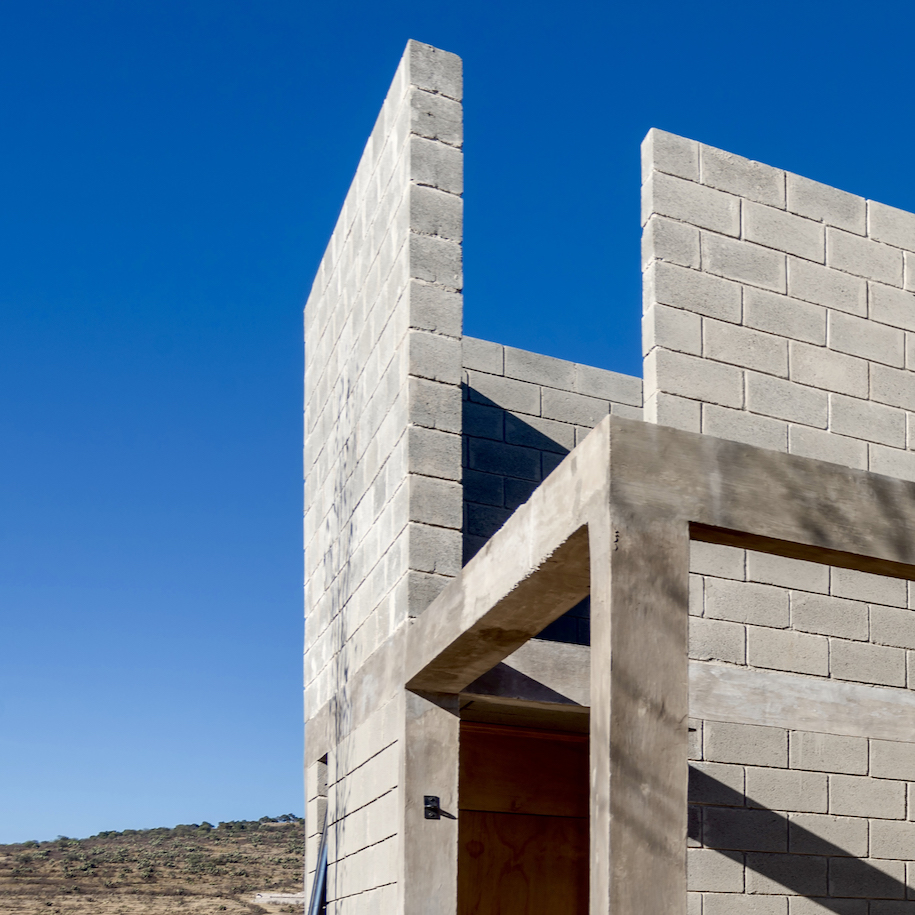Self-Produced Rural Housing suggests that, in due time and with the growth of the housing, the primal cell will only appear as the beautiful memory of the seed that allowed the house’s growth. The social housing project was completed in 2019 in Apan, Mexico by Kiltro Polaris Arquitectura in collaboration with JC Arquitectura and Localista.
-Text provided by the authors
It has never been a secret that, beginning with the industrial revolution, cities experienced an unprecedented growth. People, driven by better life opportunities, left the countryside and ventured to live life in cities that were growing frantically at the pace of progress. During and after World War II, Mexico a country with a large rural area, experienced similar growth.
Large buildings were built, major housing projects were promoted, cities were created ex novo, public policies promoting the growth of cities were approved and, without realizing it, we entered fully into modernity. Mexico ceased to be rural to become metropolitan, concentrating almost 80% of its population in the cities (according to data from the 2010 census of INEGI).
After decades of focusing public policies on urban centers, the decision was made to turn to the countryside to give back some of the much it has given us. Called by the Research Center for Sustainable Development (CIDS) of INFONAVIT, Open Source or Creative Commons projects were developed to analyze and prove that it is possible to develop rural social housing in a different way.
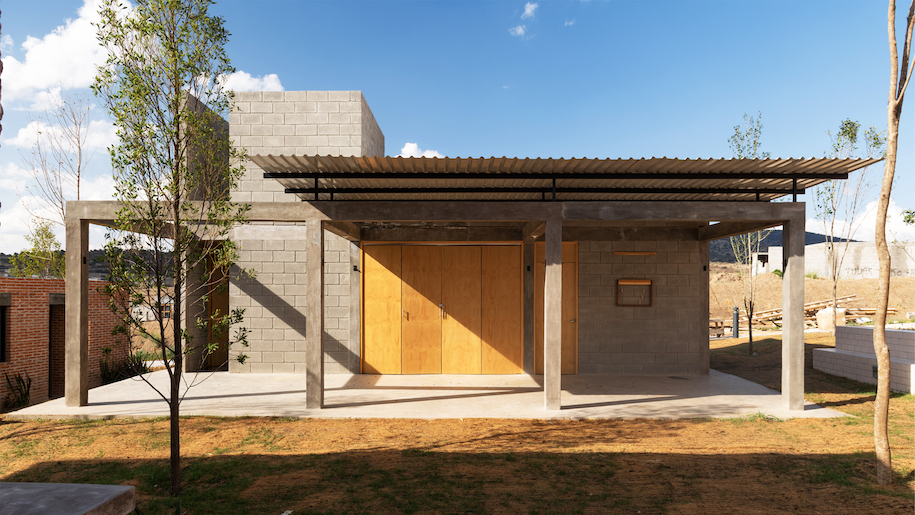
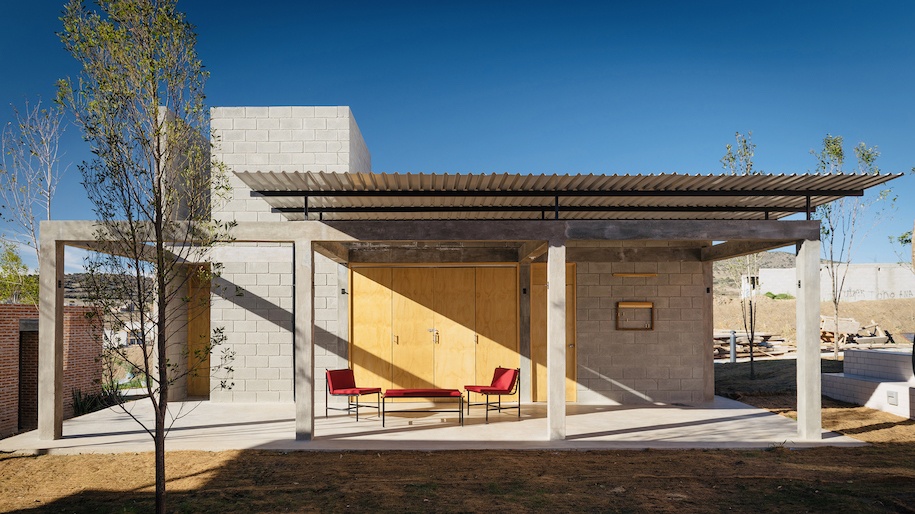
One of the premises stipulated for this Assisted Self-Produced Rural Progressive House is that it should remain in the category of affordable housing and be subject to federal funding. The main plan of the house contemplates a concrete terrace on which a reticular concrete structure unfolds. One part of the structure contains the main housing services toilet, kitchen, living-dining room, and bedroom, while the other allows for immediate growth. Just as in vernacular architecture, the growth of the dwelling is meant to be achieved with the resources of the resident, without jeopardizing the integrity of the property or that of its dwellers.
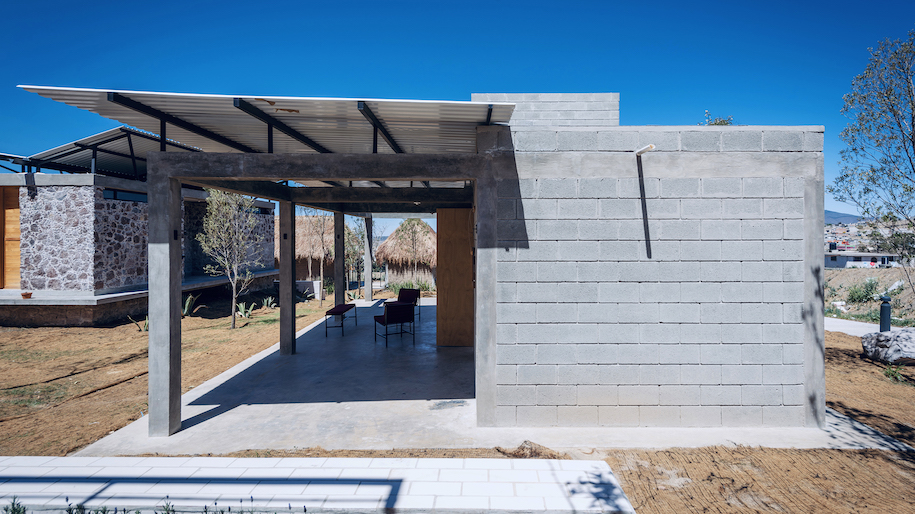
The idea behind the Assisted Self-Produced Rural Progressive House is that, with due time and growth, the primeval cell becomes only a reminder of the seed that allowed for that growing.
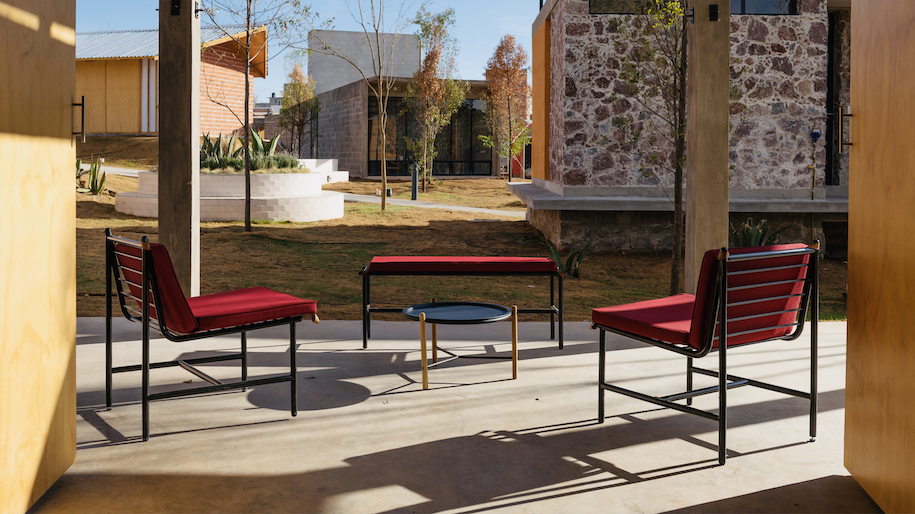
Facts & Credits
Project Title The Growing House
Architecture JC Arquitectura, Kiltro Polaris Arch, Localista
Location Apan, Hidalgo, México
Completion Year 2019
Collaborators/Consultants Juan Carral O’Gorman, Victor Ebergenyi Kelly, Giancarlo Reyes Olguin, Jorge Viñas
Photography Jaime Navarro
Βασική αρχή του Self-Produced Rural Housing είναι η προοδευτική αγροτική στέγαση της υποβοηθούμενης αυτοπαραγωγής όπου με την ανάπτυξη του κτηρίου και την μεταβολή-επέκταση του απο τους εκάστοτε κατοίκους, το πρωτεύον κύτταρο θα προβάλλεται μόνο ως η μνήμη του πρώτου “σπόρου” που επέτρεψε την ανάπτυξη του σπιτιού. Το συγκρότημα κοινωνικής κατοικίας ολοκληρώθηκε το 2019 στο Απαν στο Μεξικό από το γραφείο Kiltro Polaris Arquitectura, σε συνεργασία με τους JC Arquitectura και Localista.
-Κείμενο από τους δημιουργούς
Ξεκινώντας με τη βιομηχανική επανάσταση οι πόλεις γνωρίσαν μια ανάπτυξη χωρίς προηγούμενο. Με κίνητρο καλύτερες προοπτικές διαβίωσης, πολλοί εγκατέλειψαν την επαρχία και τολμήσαν να ζήσουν μια ζωή στα αστικά κέντρα τα οποία μεγάλωναν μανιωδώς με το ρυθμό της προόδου. Κατά τη διάρκεια και μετά τον Β’ Παγκόσμιο Πόλεμο, το Μεξικό, μια χώρα με εκτενείς αγροτικές εκτάσεις, παρουσίασε παρόμοια εξέλιξη.
Κατασκευάστηκαν μεγάλα κτήρια, προωθήθηκαν μείζονα έργα στέγασης, δημιουργήθηκαν πόλεις εκ του μηδενός, εγκρίθηκαν δημόσιες πολιτικές που προήγαγαν την ανάπτυξη πόλεων, και χωρίς να το αντιληφθεί κανείς, μπήκαμε πλήρως στη μοντέρνα εποχή. Το Μεξικό έπαψε να είναι αγροτικό ώστε να γίνει μητροπολιτικό, συγκεντρώνοντας σχεδόν το 80% του πληθυσμού του σε πόλεις (σύμφωνα με τα στοιχεία της απογραφής του 2010 της INEGI).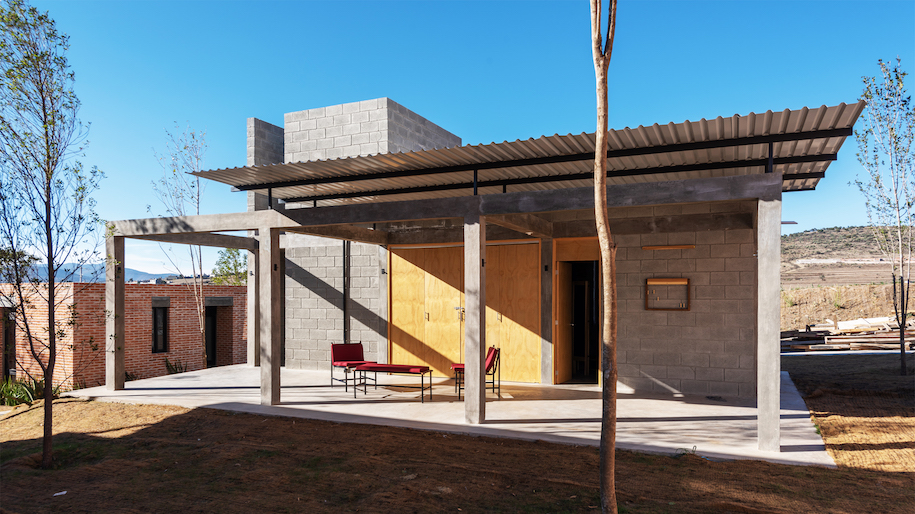
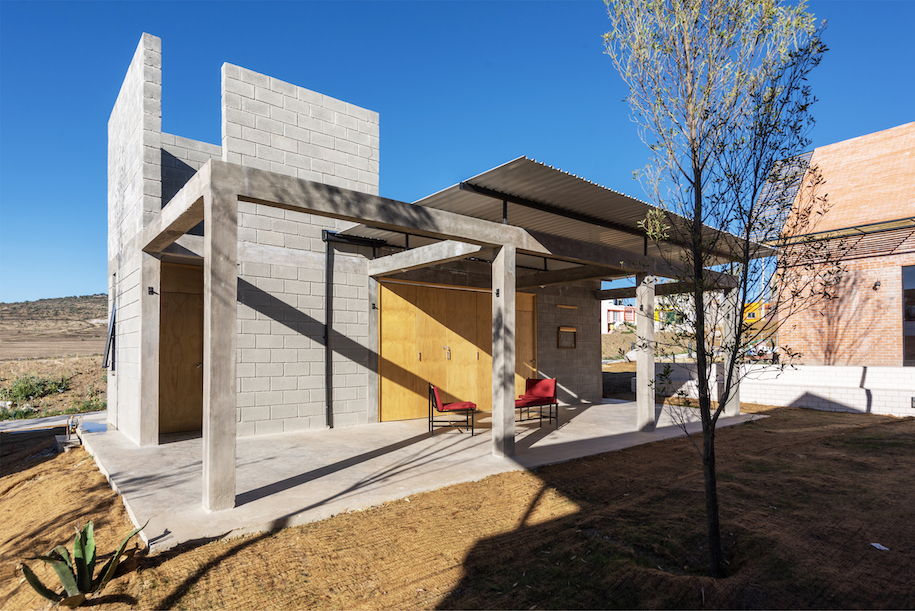
Μετά από δεκαετίες εστίασης δημοσίων πολιτικών σε αστικά κέντρα, ελήφθη η απόφαση να στραφούμε στην επαρχία και να ανταποδώσουμε ορισμένα από όσα μας έχει δώσει. Καλεσμένοι από το Ερευνητικό Κέντρο Αειφόρου Ανάπτυξης (CIDS) της INFONAVIT, αναπτύχθηκαν έργα Open Source ή Creative Commons ώστε να αναλύσουν και να αποδείξουν πως η αγροτική κοινωνική κατοικία είναι εφικτή με εναλλακτικό τρόπο.
Μια από τις αρχές αυτής την υποβοηθούμενης αυτοδημιούργητης αγροτικής κατοικίας, είναι ότι πρέπει να παραμένει στην κατηγορία της προσιτής λύσης στέγασης και να υπόκειται σε ομοσπονδιακή χρηματοδότηση. Η κυρίως κάτοψη της κατοικίας αναπτύσσεται γύρω από μια αυλή απ’ όπου ξεδιπλώνεται ένα οικοδόμημα από εμφανές μπετόν. Ένα μέρος της δομής εμπεριέχει τις βασικές λειτουργίες της οικίας, λουτρό, κουζίνα, σαλόνι, τραπεζαρία και υπνοδωμάτιο, ενώ το υπόλοιπο επιτρέπει την άμεση επέκταση. Όπως και στην τοπική αρχιτεκτονική, η εξέλιξη της κατοικίας προορίζεται να επιτευχθεί ανάλογα με τους πόρους του κατοίκου, χωρίς να διακυβεύεται η ακεραιότητα του ακινήτου ή των κατοικιών του.
Drawings
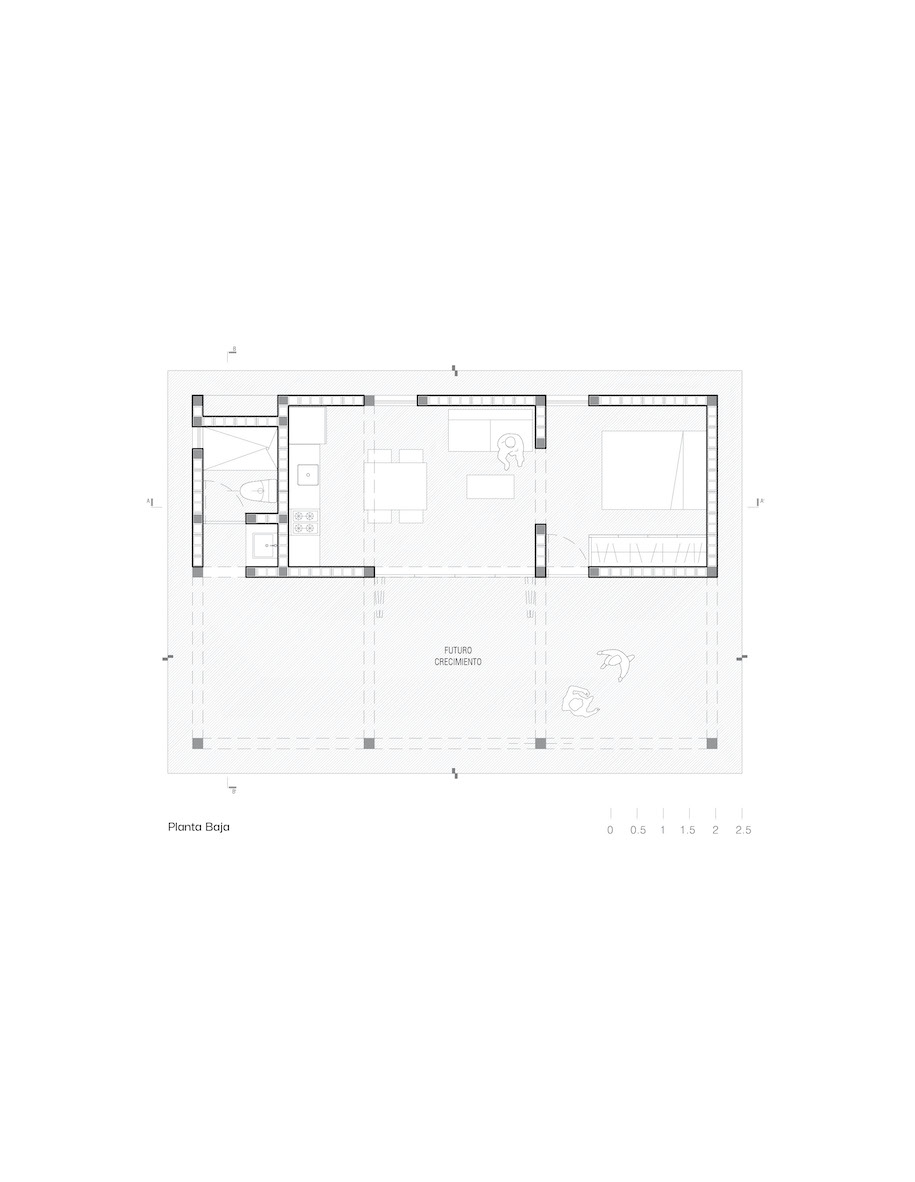
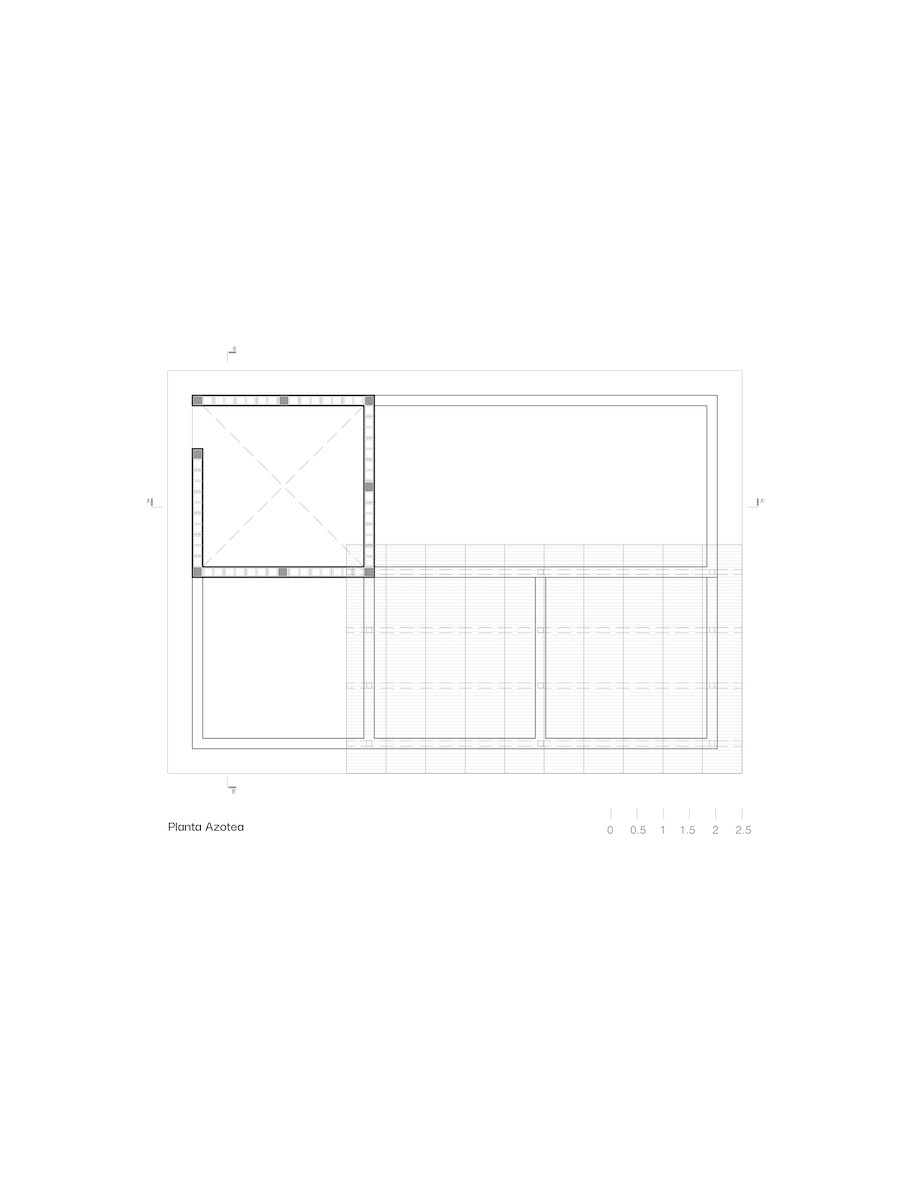
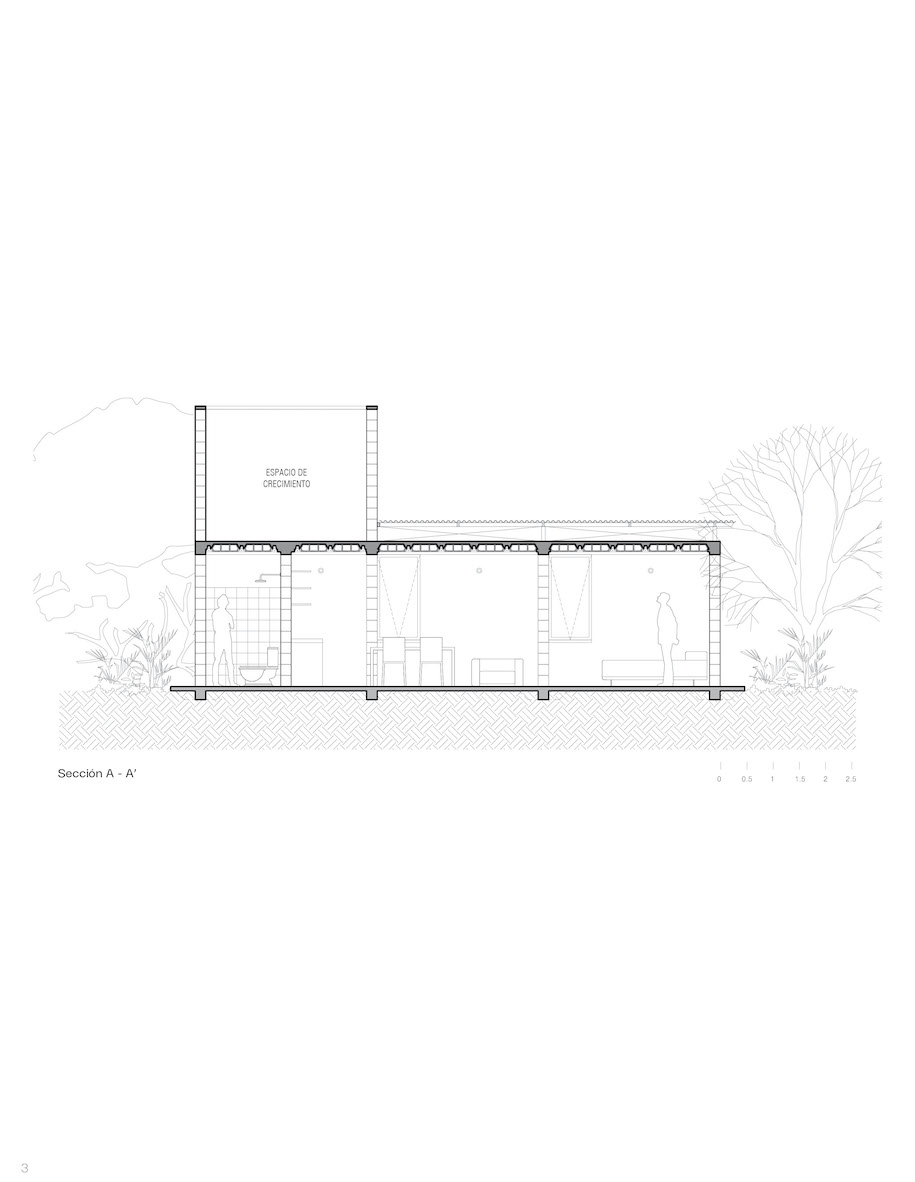
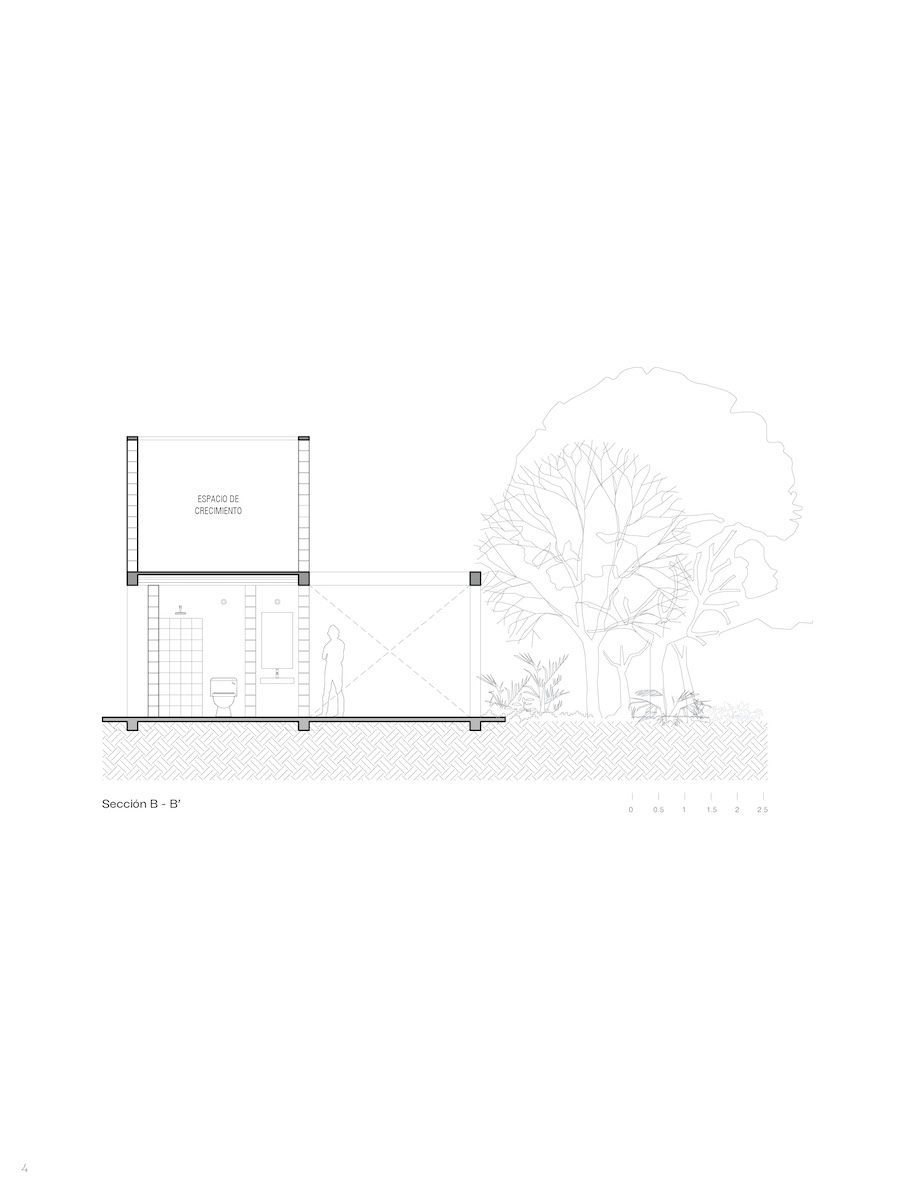
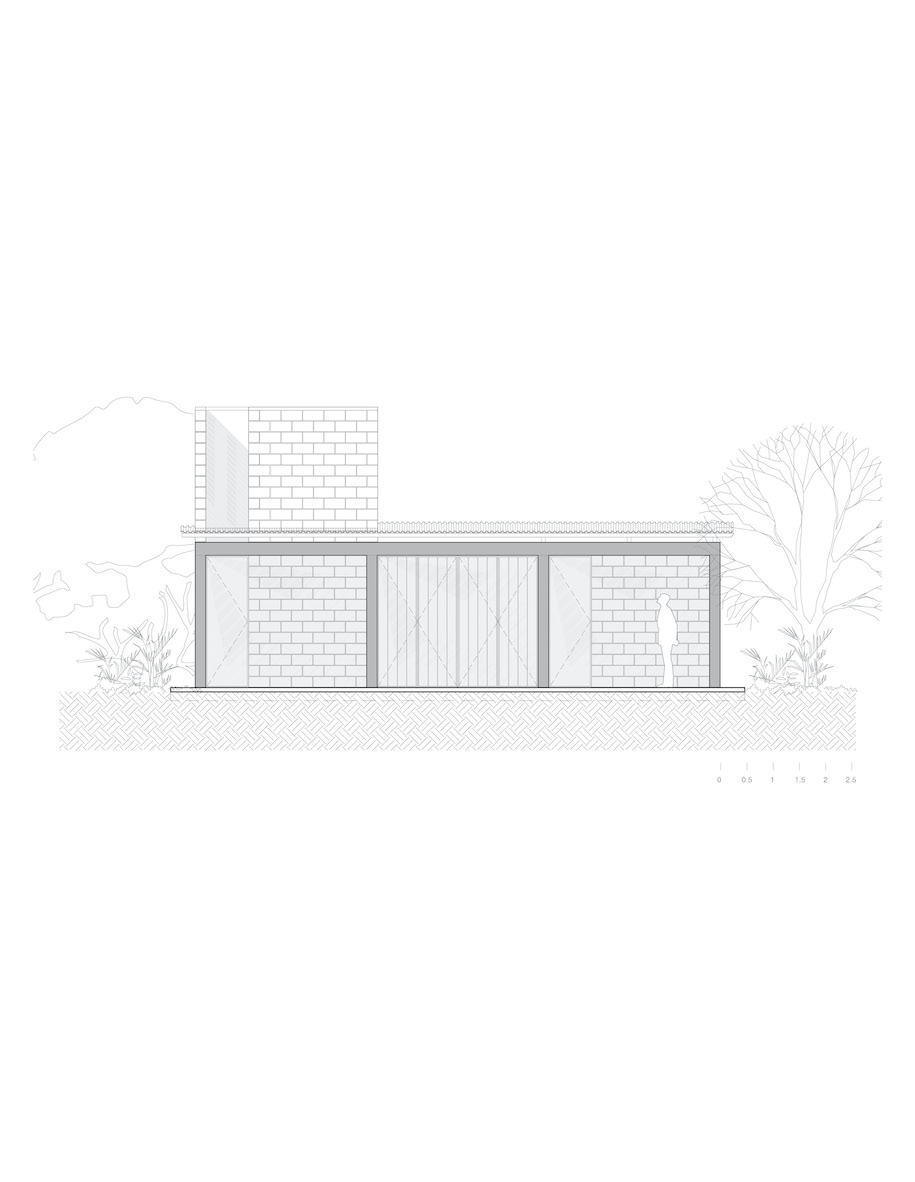
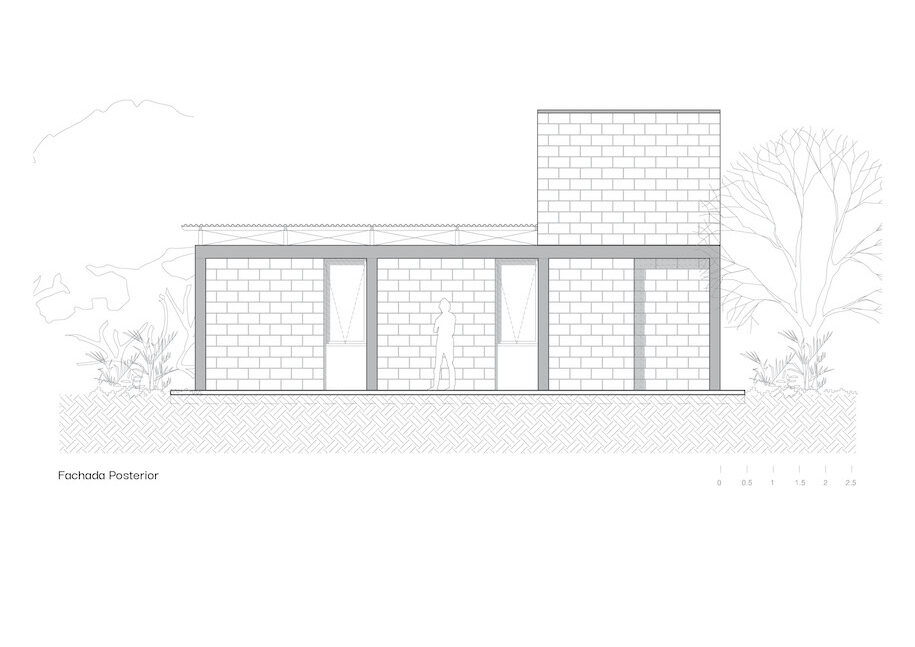
Στοιχεία έργου
Τίτλος Εργου The Growing House
Αρχιτέκτονες JC Arquitectura, Kiltro Polaris Arch, Localista
Τοποθεσία Απαν, Μεξικό
Ετος 2019
Συνεργάτες/Σύμβουλοι Juan Carral O’Gorman, Victor Ebergenyi Kelly, Giancarlo Reyes Olguin, Jorge Viñas
Φωτογραφία Jaime Navarro
READ ALSO: Slab House | Bureau de Change
